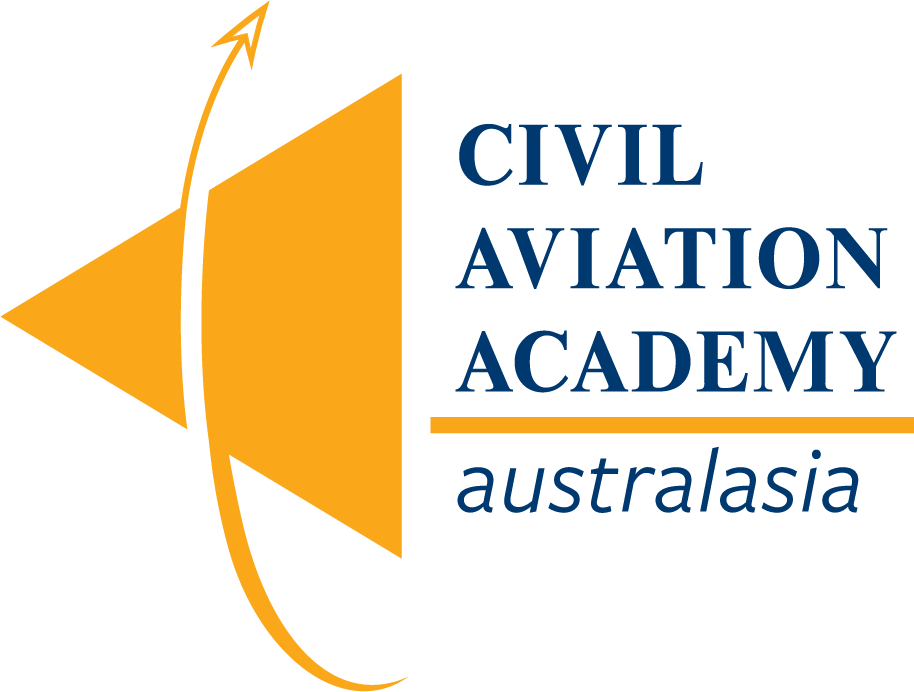- 08 6180 7939
- andy@caaa.com.au
- Mon - Fri: 9:00 - 15:00 (WST Perth)

CAAA News
Amelia Earhart – An Inspiration to us all
Facebook
LinkedIn
Amelia Earhart is immediately recognised as a trailblazer for women aviators worldwide who have become pilots in a largely male-dominated arena. In addition, she is an inspiration to adventurers everywhere. She became one of the world’s first female aviators at a time when people were beginning to explore the world on aircraft, the beginning of civil aviation as we know it.
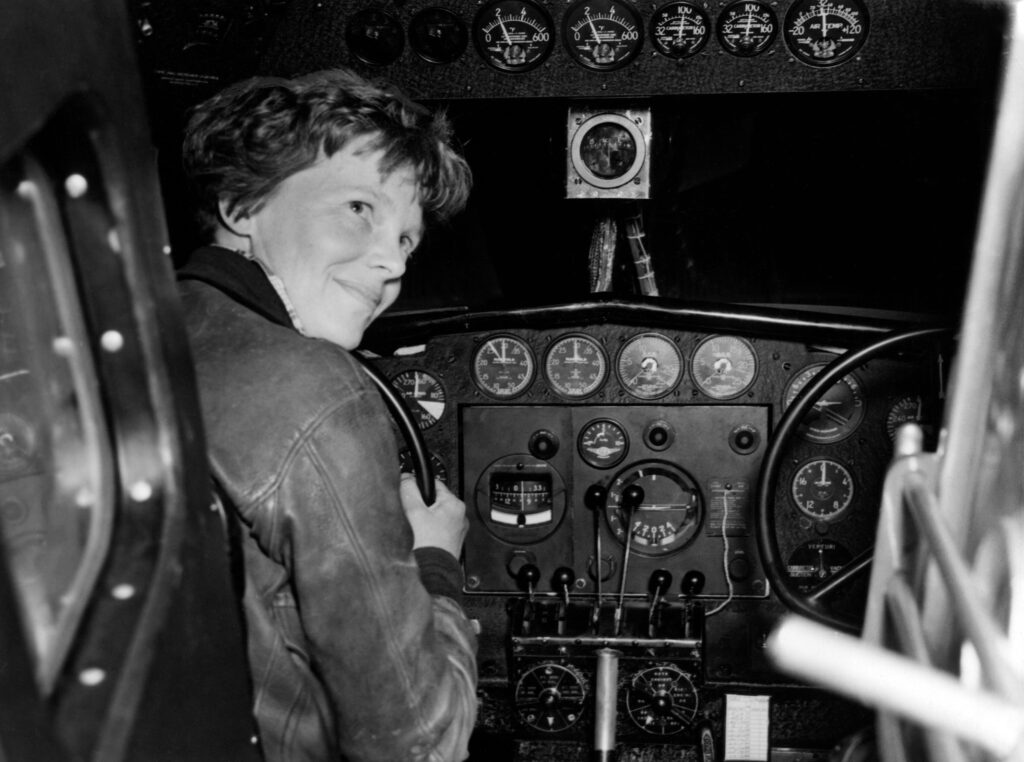
Amelia (born July 24th, 1897, Atchison, Kansas, U.S) became interested in flying following her first flight in an aircraft in 1920. The experience spurred her on to take flying lessons. In 1921 she bought her first aircraft and earned her pilot’s licence two years later.
Carer and Social Worker
Amelia entered Columbia University as a pre-med and studied to become a nurse’s aide so she could care for wounded soldiers in WW1. Her studies led her to become a social worker in a settlement home for immigrants in Boston, Massachusetts. During this time, her passion for aviation never waned.
Atlantic Ocean Crossing 1928
In 1928 she was selected by promoters to fly across the Atlantic Ocean as a passenger on a seaplane, Friendship, with two pilots, Wilmer Stultz and Louis Gordon. While going along as “extra weight” was not appealing, she accepted the offer anyway. When the flight landed in Wales on June 18th, Earhart became an international celebrity. She was the first woman to cross the Atlantic.
She married her publicity organiser, George Palmer Putnam, in 1931 following a whirlwind lecture tour to talk about her experience. However, Amelia maintained her maiden name for her entire aviation career.
Solo Atlantic Crossing
When Amelia decided to fly solo across the Atlantic, she became the only woman to do this and the second person ever to attempt such a flight. Charles Lindbergh had successfully made the solo flight five years before, in 1927 and landed in Paris, France.
On May 20th, 1936, this adventurous 34-year-old woman took off from Newfoundland in Canada to attempt a solo flight across the Atlantic Ocean.
Her Lockheed Vega 5B plane was a sturdy aircraft, a six-passenger high wing monoplane. The Vega 5B were highly prized in the aviation industry of the time and was a favourite with pilots wanting to set speed and distance records.
Flying her “Little Red Bus”
When she boarded her “Little Red Bus” on May 20th, 1932, she had plans to follow Lindberg’s route and land in Paris; however, she experienced technical problems and had to land in Ballyarnett, Derry, Ireland. The solo flight across the Atlantic took her 15 hours, and when she landed, she became an immediate international sensation.
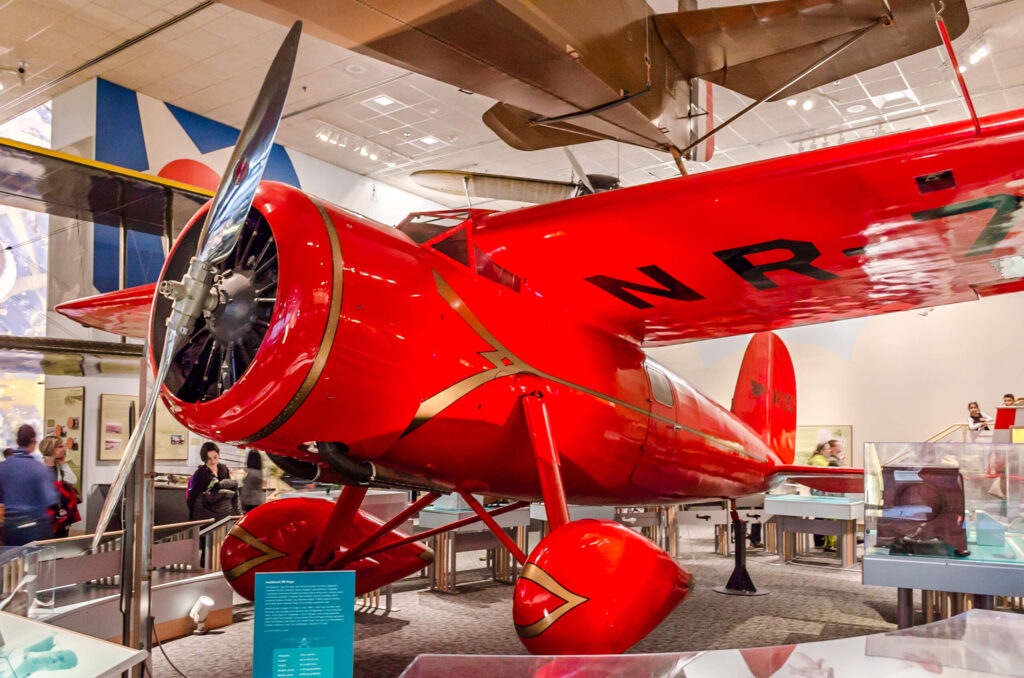
Challenging Gender Norms
The 1930s in America was not an easy time for Earhart to be challenging gender norms. The great depression was on the doorstep, and many women who had gained employment during WW1 were once again expected to take themselves off the job market and go back to being homemakers. Moreover, those who did continue to work were subject to substantial wage gaps and discrimination in the workplace.
Amelia Earhart’s Final Flight, 1937
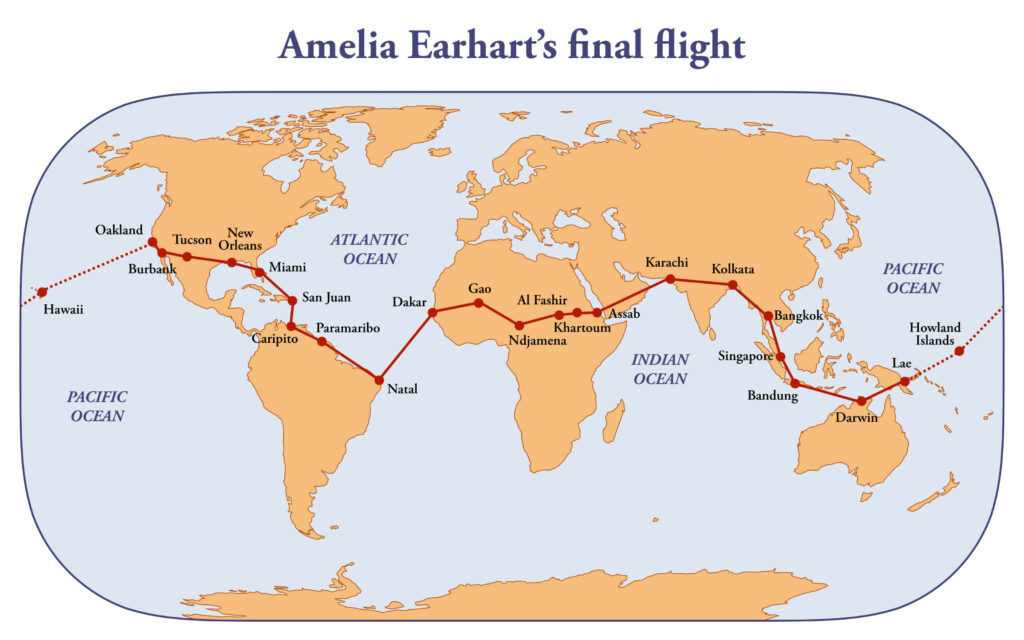
On June 1st, 1937, Amelia and her navigator, Fred Noonan, set off from Oakland, California, on a round-the-world trip in their aircraft a Lockheed Electra. The pair encountered many difficulties throughout their journey, due to overcast conditions and poor radio reception. After they landed in Darwin, Northern Territory, on June 28th, their next stop was New Guinea, where they refuelled and departed on July 2nd. Howland Island, a dot in the Pacific Ocean, was marked as their next refuelling spot, but unfortunately, they never arrived. She and Fred’s disappearance has been called one of the great mysteries of the 20th century. Despite numerous search attempts, the plane is yet to be found.
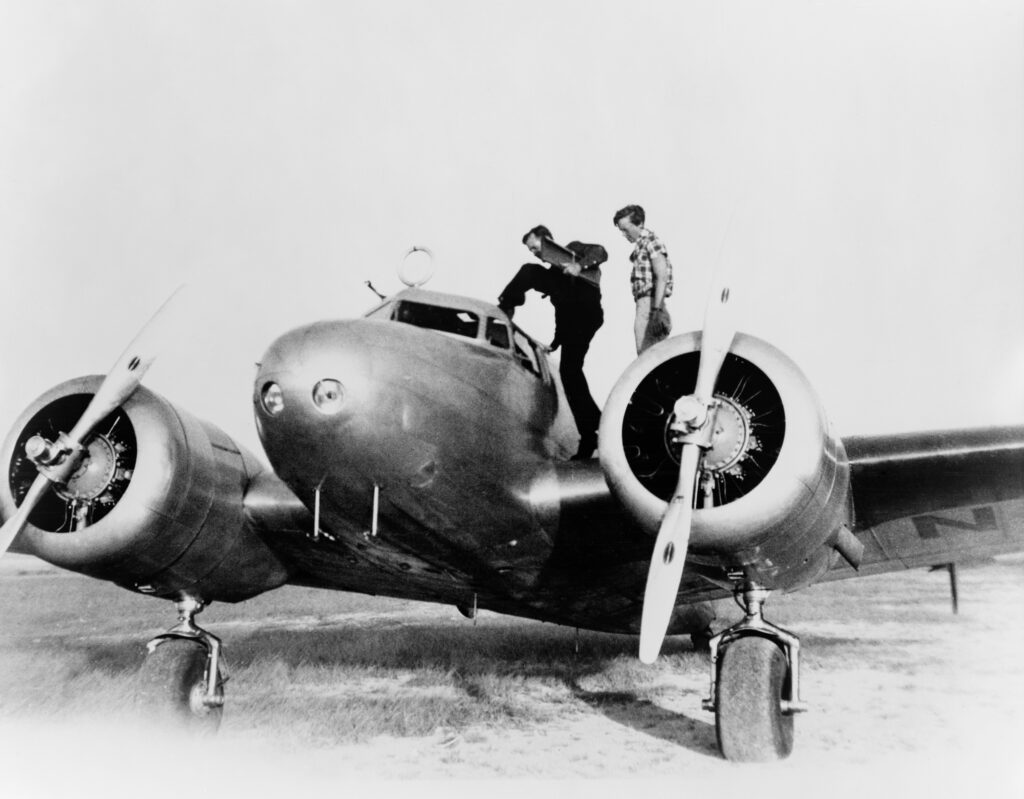
Some of Earhart’s other achievements
- In 1931, Earhart piloted an autogiro to a record-setting altitude of 18,415 feet (5,613 metres)
- 1932 – following her Atlantic flight, she became the first woman to fly solo across the USA setting women’s speed and distance records.
- Earhart competed in the first transcontinental air race for women in 1929
- She was one of the founders of The Ninety-Nines that same year and became their president. The Ninety-Nines represented the 99 women out of 285 women pilots who became charter members for business and recruitment purposes.
- The National Aeronautic Association made Earhart the first female vice-president of the organisation.
- Amelia designed a line of functional women’s clothing and travel luggage.
The Golden Age of Aviation
People sometimes coin the 20 years from 1919 to 1939 as “The Golden Age of Aviation”. It was the beginning of air transport for people who could afford a seat on a passenger plane. In addition, aircraft had become sleeker and faster. As a result, President Franklin Roosevelt signed the Civil Aeronautics Act in 1938 to ensure a federal focus on aviation safety in the USA.
CAAA – Aviation Training Consultants
Did you know that our very own CEO, Sue-anne gained her Commercial Pilot License 32 years ago? Sue-anne was a Chief Pilot (Head of Flying Operations) and Chief Flying Instructor at Jandakot Airport. She loves to look back on her exciting adventures travelling throughout Australia’s North in various aircraft.
Although aviation had moved on in many ways since Amelia’s time, only half a dozen women pilots worked commercially at Jandakot when Sue-anne received her first paycheck as a pilot. One of our directors, Phil, a retired airline pilot, has some aviation tales to tell of flying in New Guinea in the 1970s and bumping around the northwest in a de Havilland Otter and DC-3 aircraft.
With many hours of practical aviation experience, our people are competent aviation specialists for your training and consultancy requirements. Get in touch today
